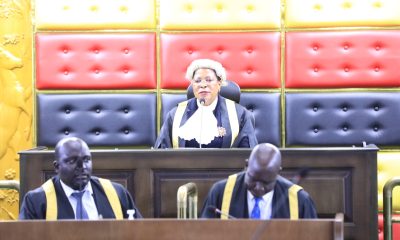Culture
Why Are Popes Traditionally Buried in Three Coffins?
Centuries of history and symbolism inform the tradition.
The burial of popes involves unique traditions that reflect centuries of history and symbolism, including using three coffins to honor their legacy. Here are answers to five common questions about papal burials.
What happens to the pope’s body when he dies?
After a pope’s death, the Catholic Church enters sede vacante, meaning “the seat being vacant.” This period, which marks the transition between popes, includes a series of steps, directed by the Ordo Exsequiarum Romani Pontificis, outlining papal funeral rites. According to the Catholic News Agency, the 2024 edition of the official liturgical book states that after the death of a pope, the body is examined and preserved so public viewing can be carried out with the “greatest decorum and respect.”
The pope’s remains, dressed in a white cassock (symbolizing purity), are moved to the private papal chapel where the camerlengo, or chief cardinal, oversees the death certification rite and deposition in a coffin. The pontiff’s body, adorned in red vestments (representing the passion and blood of Christ) with a mitre and pallium (scarf-like accessory), is placed in a zinc-lined coffin for visitation and prayer at the Vatican.
The body typically lies in state for three days, followed by a nine-day ancient mourning tradition called Novendiales.
Why three coffins instead of one?
Traditionally, a pope’s burial included three nested coffins, each with its own materials, purpose and symbolism, according to Vatican News. The inner cypress coffin, symbolizing humility, holds the pope’s body and personal items. The middle coffin, made of lead, preserves the body and secures important documents. And the outer coffin, crafted of elm or oak, ensures durability, symbolizes strength and honors the pope’s dignity.
Has this always been the tradition?
In her book The Deaths of the Popes, papal historian Wendy J. Reardon writes that the tradition of using three coffins dates back to the 14th century, and continued through Pope Benedict XVI’s funeral in 2023. In 2024, Pope Francis simplified funeral rites in the Ordo Exsequiarum Romani Pontificis, opting for a single zinc-lined wood coffin.
What else is placed in the coffin?
According to Reardon, the inner coffin traditionally includes coins minted during the pope’s reign and a rogito–a history of his key acts–written on parchment paper and placed in a brass or metal tube. Along with a death certificate, other symbolic items—including the pope’s miter, pastoral staff, broken ring and rosary—are also placed in the inner coffin.
Where are popes buried?
Most popes–more than 90, including John Paul II and Pius XII–are buried in the Vatican grottoes under St. Peter’s Basilica in Vatican City. However, some are buried in other Roman churches, including Pope Francis, who requested to be buried in the Basilica of Santa Maria Maggiore in Rome, the resting place of seven other popes. He is the first pope since Leo XIII in 1903 not to be buried in the Vatican. Around 30 popes are buried outside of Rome, including six in France when the papacy moved to Avignon between 1309 and 1377.
Comments


























